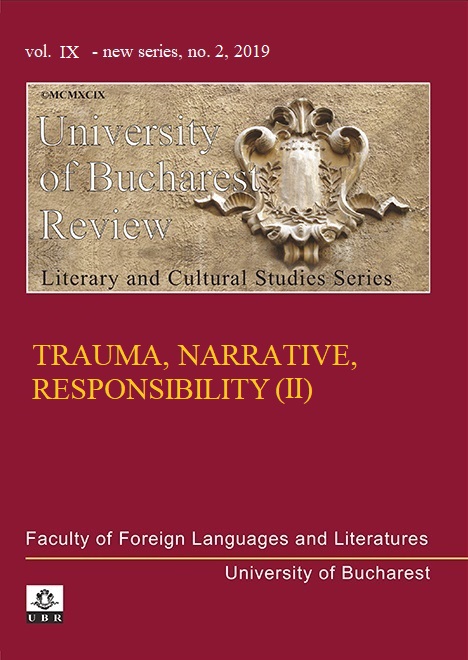TRAUMA AND TRANSGENDER SPACE IN ARUNDHATI ROY’S THE MINISTRY OF UTMOST HAPPINESS
TRAUMA AND TRANSGENDER SPACE IN ARUNDHATI ROY’S THE MINISTRY OF UTMOST HAPPINESS
Author(s): Shruti DasSubject(s): Philology
Published by: Editura Universităţii din Bucureşti
Keywords: identity construction; transgender; trauma; Khwabgah; space;
Summary/Abstract: Social space largely decides the role of the human and the extent to which she controls or affects the physical environment. Any form of justice advocates and contends that instances of injustice are not simply arbitrary realities which occur in varying contexts. Rather, instances of injustice are the outcome of an institutional oppression and isolation which have set up an inevitable and sometimes invisible framework of colonization and the resultant anxiety and trauma by creating heterogenous spaces outside the accepted social space. More often than not, it is the effect of the gaze on the subject. In her novel The Ministry of Utmost Happiness (2017) Arundhati Roy, along with other stories, narrates the trauma of Anjum, a transgender, who was born a male, which forms one of the central threads of the narrative. Anjum, born Aftab, subsequently leaves her home to live with nine other transgenders who are ‘othered’ by the gaze and form a world of their own in a secluded, closely guarded and dilapidated home, the “Khwabgah” or “Palace of Dreams,” in the lap of sophisticated New Delhi. Roy raises certain critical questions in this novel. One of them hitherto unexplored is the cultural trauma experienced by the transgender individual and the people associated with them. This paper attempts to bring to focus and analyse, with the tools of psychoanalysis, the effects of trauma in the construction of identity, specifically, with regard to the violated transgender psyche and their isolation in The Ministry of Utmost Happiness, with special focus on Anjum as a case in point, so that the readers can connect, understand and sympathize the homonormative individuals. This study draws on various theories of trauma like Julia Kristeva’s theory of abjection and Lacan’s theory of gaze.
Journal: University of Bucharest Review. Literary and Cultural Studies Series
- Issue Year: IX/2019
- Issue No: 2
- Page Range: 44-53
- Page Count: 10
- Language: English

